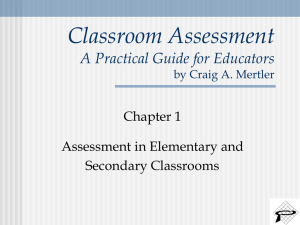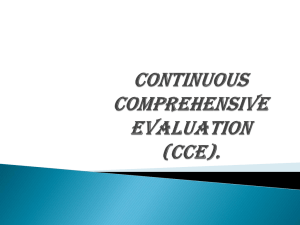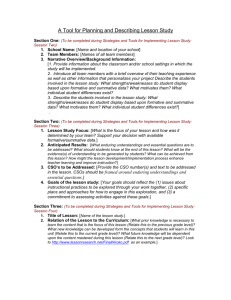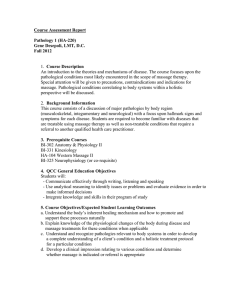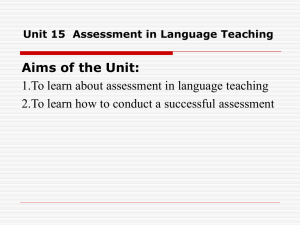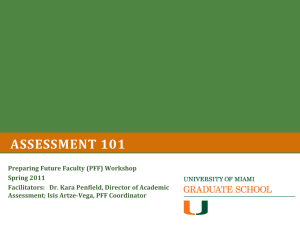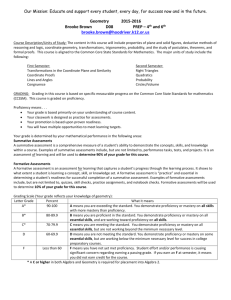Language Assessment
advertisement
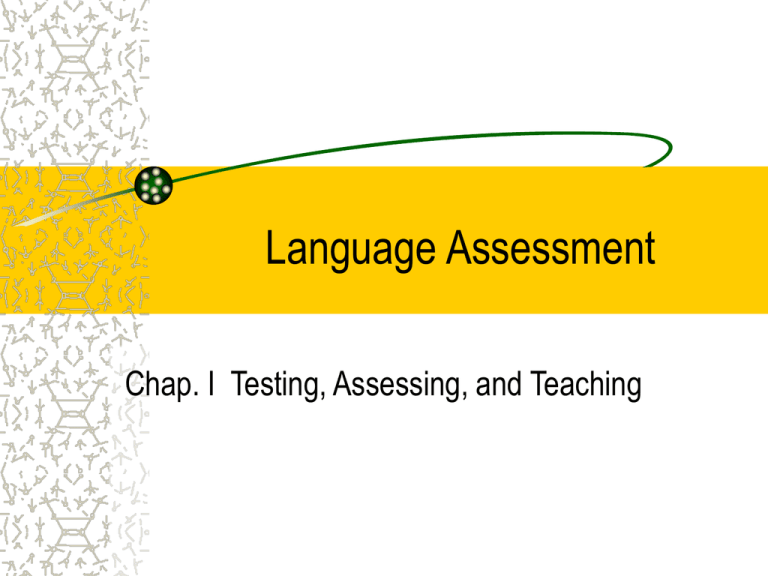
Language Assessment Chap. I Testing, Assessing, and Teaching Purpose (1). create more authentic, intrinsically motivating assessment procedures that are appropriate for their context.. (2). is designed to offer constructive feedback to your students. What Is A Test? Definition: A test is a method of measuring a person’s ability, knowledge, or performance in a given domain. An instrument– a set of techniques, procedures, or items. Explicit and structured What Is A Test? Measure– general ability/specific competence Examples: proficiency test/quiz/shortanswer essay test/large-scale standardized test Ability, Knowledge,or Performance— Who/What/How/Appropriate What Is A Test? Performance->ability/competence to perform language or knowledge about language Examples: to speak,write, read, or listen/recite a grammatical rule A given domain—general competence in all skills/specific criteria e.g. proficiency test/vocabulary test Assessment And Teaching Definition Assessment is an ongoing process that includes a wider domain than a test. Examples: responding to a question, writing an essay, offering a comment, reading/listening activities Tests are a subset of assessment, one among many procedures and tasks to assess students. Tests, Assessment, and Teaching Tests Assessment Teaching Informal and Formal Assessment Informal assessment (1). takes a number of forms (2). is designed to elicit performance. Examples: “Nice job!”, “Good work!”, marginal comments on papers, responding to a draft of an essay, advice, a suggestion. Formal assessment is systematic and planned, constructed to give an appraisal of student achievement. Formative and Summative Assessment Examples: a comment, a suggestion, and attention to an error. Formative assessment evaluates in the process of students’ growth, their skills and competencies. (1).Most of classroom assessment is formative assessment. (2). All kinds of informal assessment are formative. Summative Assessment Summative assessment aims to measure, or summarize what a student has grasped, and typically occurs at the end of a course or unit of instruction. e.g. final exams and general proficiency exams. Tests> learning experiences Norm-Referenced vs. CriterionReferenced Tests In norm-referenced tests, each test-taker’s score is interpreted in relation to a mean, median, standard deviation, and/or percentile rank. Examples: Scholastic Aptitude Test (SAT), the Test of English as a Foreign Language (TOEFL) Criterion-referenced tests are designed to give test-takers feedback on specific course or lesson objectives. e.g. classroom tests Discrete-Point & Integrative testing Discrete-point tests assume that language can be broken down into its component parts and those parts can be tested successfully. Components are such as listening, speaking, reading, writing, lexicon, syntax, and discourse. Examples of integrative test are cloze tests and dictations. CIoze Test & Dictation A cloze test is a reading passage in which roughly every sixth or seventh word has been deleted; the test-taker is required to supply words that fit into those blanks. Dictation is a testing technique that requires learners listen to a passage of 100 to 150 words read aloud and write what they hear. Three stages: without pauses/long/normal speed Communicative Language Testing Unitary trait hypothesis contended that all the discrete points do not add up to the whole and that language proficiency is indivisible. Performance-Based Assessment involves interactive tasks, such as oral interview, written production, open-ended responses, and group performance.(higher content validity) Traditional & Alternative Assessment Traditional assessment: One-shot, standardized exams/timed, multiplechoice format/decontextualized test items/scores suffice for feedback/norm-referenced scores/focus on the right answer/summative/oriented to product/noninteractive performance/fosters extrinsic motivation Alternative Assessment: Continuous long-term assessment/untimed, freeresponse format/contextualized communicative tasks/individualized feedback and washback/criterion-referenced scores/openended,creative answers/formative/oriented to process/interactive performance/fosters intrinsic motivation Computer-Based Testing Computer-based test items have fixed, closedended responses. Small-scale tests available on websites/largescale,standardized tests Computer-adaptive test (CAT) is a specific type of test. It starts with questions of moderate difficulty and is programmed to find questions of appropriate difficulty for test-takers at all performance levels.




